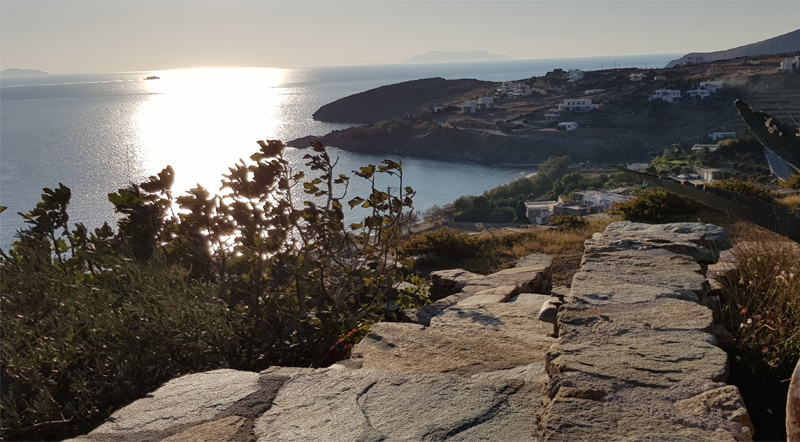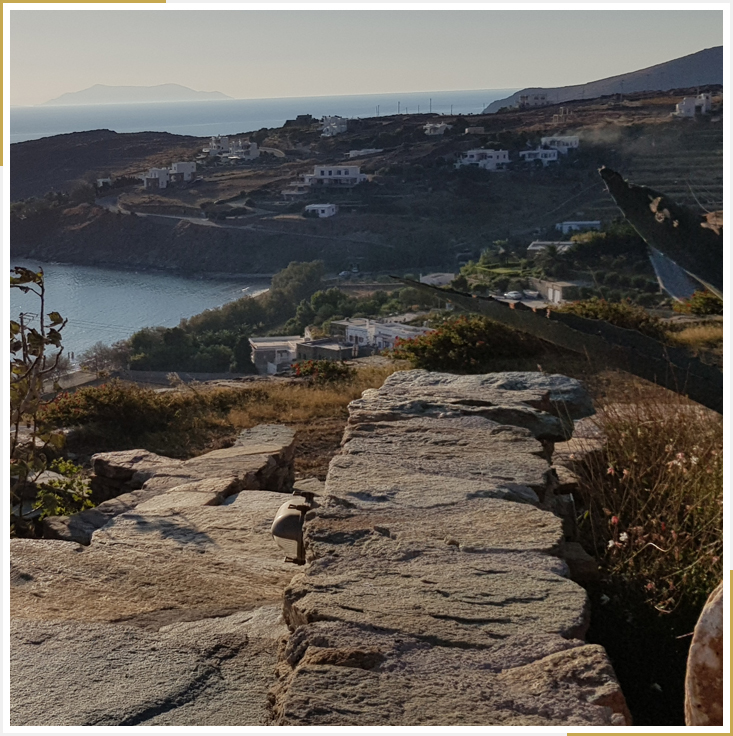
 A few words about Tinos
A few words about Tinos

Tinos has been described as an "island of art and beauty", as it is littered with masterpieces of architecture. It is endowed with nature, on the one hand with rare rocks such as green and white marble, slate and granite, and on the other hand with its environment, which favors and stimulates the artistic feeling. That is why, after all, he gave birth to a multitude of artists who excelled in both architecture and other arts.
Tinos countryside Tinian countryside is of great interest along with the architecture. The climate and environment of Tinos determined the shape of the fields, as well as the occupations of the locals. So the villagers turned the steep slopes into a farmland with the terraces (or "stairs" in the local dialect) they created, by building reticulated retaining walls, "terraces". This custom has existed in Tinos since ancient times. Already in the 4th century BC. there is evidence that the islanders used to give this shape, ie the narrow strips of land, to the sloping basin of the island. In fact, these "stairs" were also called "tombs" (anchored in the ancient Greek word "moat") and formed natural water tanks or surfaces for cultivation. In this way, the soil becomes flat, the soil is held back and not swept away by the rain, and figs or vines are planted in the middle of the ladder to protect them from the winds and to retain moisture. The farmers' access to their estates is through narrow streets. They are also built with stonework along the border of the fields, usually with stairs due to the slope of the ground, to delight the visitor either when passing or observing them.
The villages of Tinos
The majority of the settlements of Tinos were created in the 17th century. Their configuration was influenced by a variety of factors. The most important were the weather and winds on the island, soil morphology and socio-historical conditions. The raids at sea during various historical periods forced the locals to concentrate on the interior of the island, building most of their settlements there. Built in the inland of Tinos and surrounded by mountains (such as Volax, Pyrgos villages) they were not visible to the enemy. This was helped by the use of the local slate, which is abundant on the island, as well as the density with which the houses were built. Of course, some of these settlements "look" to the sea (such as the villages of Kardiani and Isternia), but sheltered from the East from which the greatest danger arose. The strong winds on the island and especially the north winds, more powerful than other islands in the Aegean, pushed for the construction of villages on the meridian slopes for the most part. Tenian artisans, cleverly exploiting the terrain, orient their villages in order to achieve their exposure to the sun, good ventilation, but at the same time protecting them from the strong winds. However, other weather events have contributed to the design of the tin house. The presence of roofs in the houses is due to the lack of snow and heavy rainfall, while the arches in the alleys of the settlements protect from rain and sun. Always near ravines and on the outskirts of the mountains, the Tinian settlements exploit the water supply and fertility of the fields for their cultivation.
Finally, the morphology of the soil and the local materials played an important role in the design of the villages and in the construction of the houses in relation to the relief of the island. The slope of the terrain with the “stairs” - steps led to the scaled form of the villages. The rocks of the island were widely used by local builders, slates on the walls of houses and drywall, marble in the alleyways, and elsewhere, as long as the owner's pocket was able to bear it.
The Tinian House
The houses in the villages of the island are a typical example of traditional art. They stand out for their simplicity and functionality. They are small with few openings, which are rare in the north face. After all, this is a major feature of Mediterranean architecture. In the old days, the exterior of the houses remained unpainted so that they would not differ from the natural landscape. Today, it is painted white or light colors, mainly for disinfection and reflection of sunlight, to avoid overheating. The building materials are mainly local marble and slate, whilst the lime is used for building, plastering, decoration or for covering cracks. The floor is covered with slates or with soil pressed.
Source: www.tinos360.gr